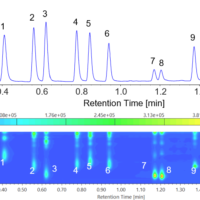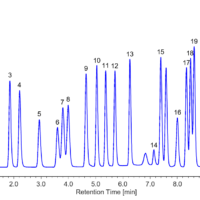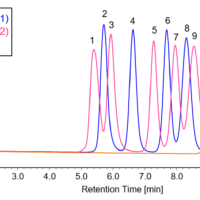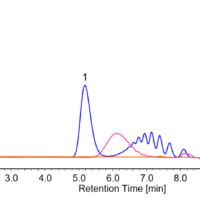Introduction
Ultra High-Performance Liquid Chromatography (UHPLC) is a separation method that employs columns packed with sub 2 µm packing materials, offering high column efficiency even at a high mobile phase linear velocity. The typical length of commercial column is 50 mm, however, 100 and 150 mm long columns are now available, offering much higher efficiency.
In this article, one such high-efficiency column is used for the analysis of diesel particulate matter which are included in a complex matrix containing many contaminates.
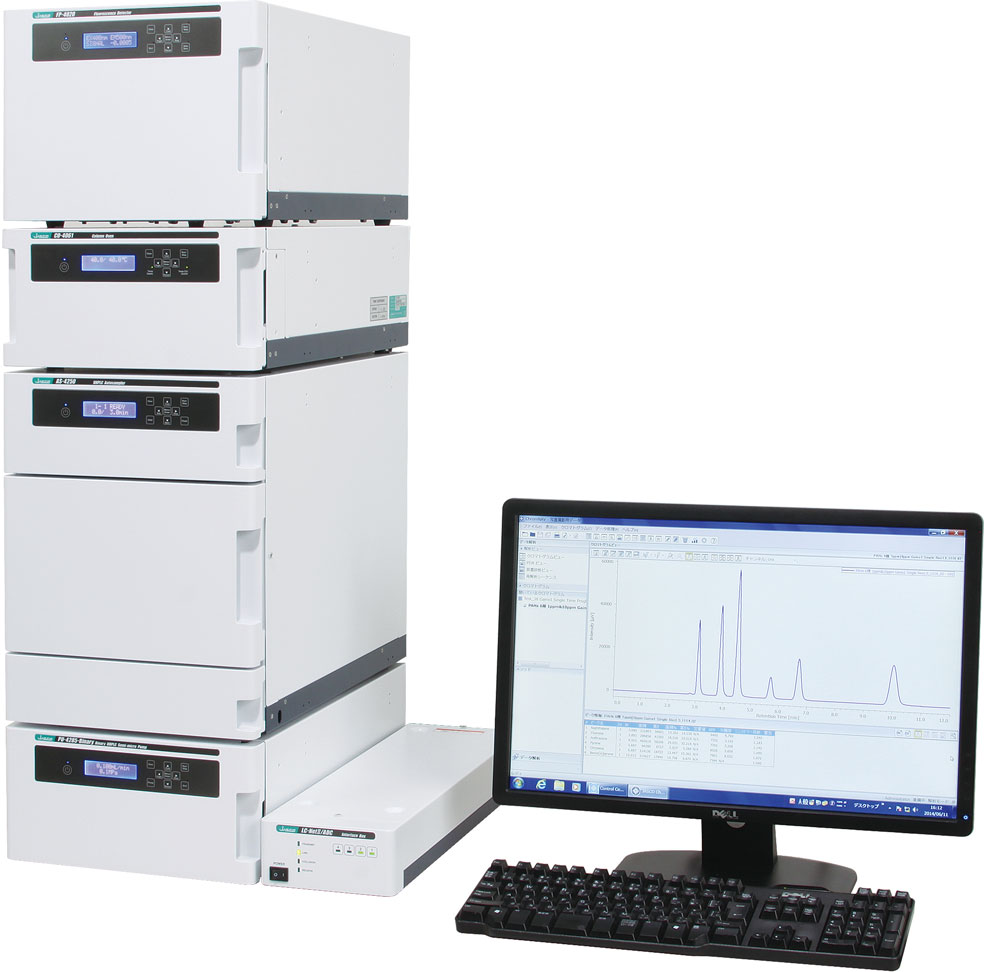
LC-4000 UHPLC system
Experimental
Chromatographic conditions
Column: ZORBAX SB-C18 (2.0 mmID x 50, 150 mmL, 1.8 µm)
Eluent: A; Water, B; Acetonitrile, High-pressure gradient
Flow rate: 0.33, 0.5 mL/min
Column temp.: 40ºC
Wavelength: 254 nm
Injection volume: 1 µL
Standard sample: PAH mixture (EPA 610 16 Mix Solution 20 ppm each in acetonitrile), Diesel exhaust particles
Keywords
UHPLC, PAH, Diesel Particulate, 1.8 µm, C18 column, UV detector
Results
Figure 1 shows the chromatograms of the standard mixture of 16 polycyclic aromatic hydrocarbons (PAHs). The top chromatogram was obtained using a 50 mm long column, while the bottom was a 150 mm long column. Peak resolutions (Rs) between benzo[b]fluoranthene, benzo[k]fluoranthene and benzo[a]pyrene, which are known to be difficult to separate among the 16 types of components, are calculated to be Rs=1.2(Peak 1&2), Rs=1.3(Peak 2&3) for a 50 mm column, and Rs=2.0 (peak 1&2) Rs=3.1(peak 2&3) for a 150 mm column. It is apparent that a 150 mm long column offers significantly better resolutions than provided by a 50 mm long column.
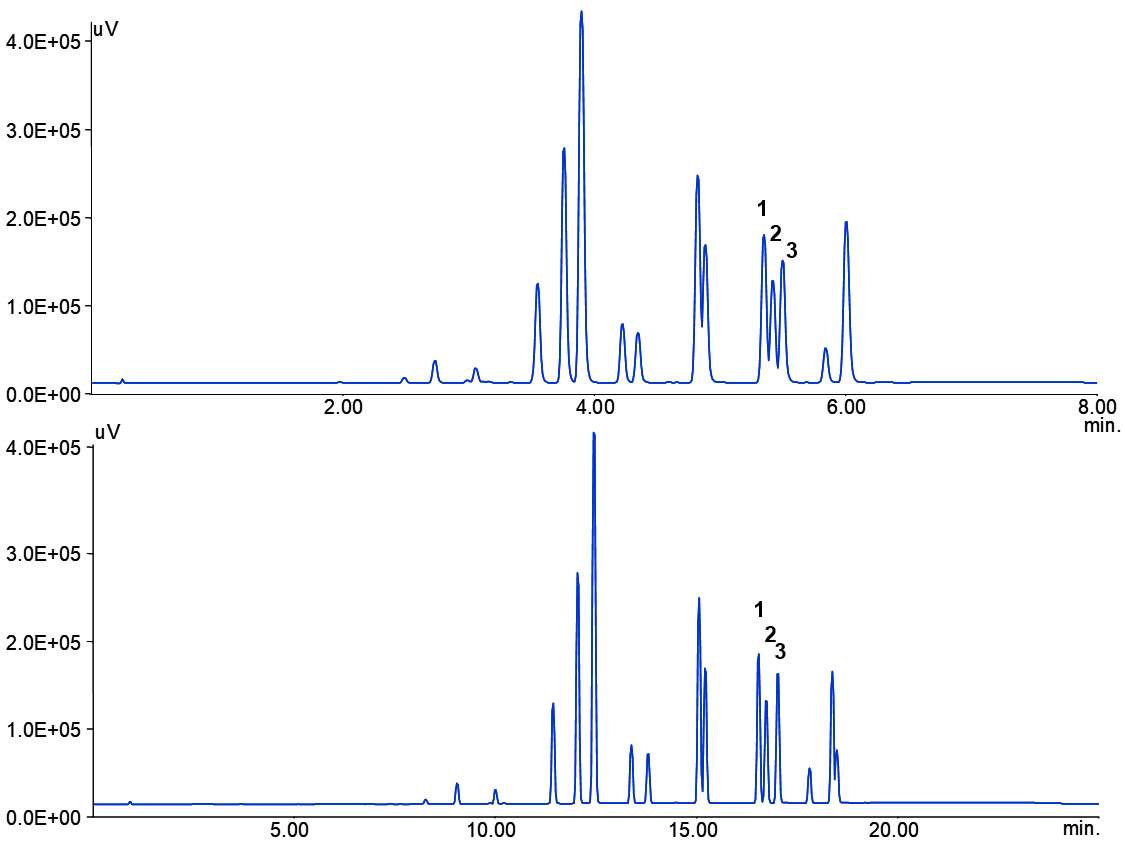
Figure 1. Chromatograms of the PAH standard mixture (Top: column length = 50 mm, Bottom: column length = 150 mm, 1: Benzo[b]fluoranthene, 2:Benzo[k]fluoranthene, 3: Benzo[a]pyrene)
Figure 2 shows the chromatograms of the components in diesel particulate matter. Seventy-nine peaks were detected using a 50 mm long column, while 143 peaks were detected using a 150 mm long column. Although the analysis time is about 3 times longer, the use of a 150 mm long column gives better results for a multi-component sample in a case such as this.
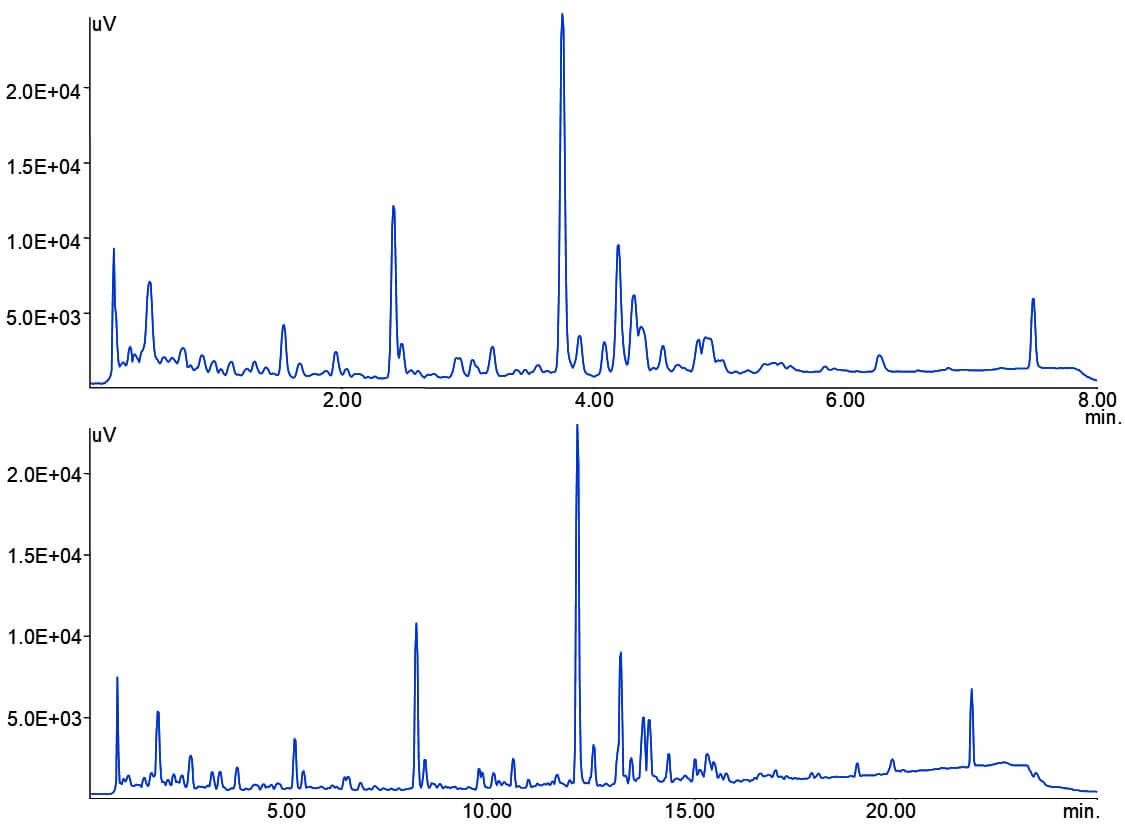
Figure 2. Chromatograms of the components in diesel particulate matter (Upper: column length = 50 mm, Lower: column length = 150 mm)

